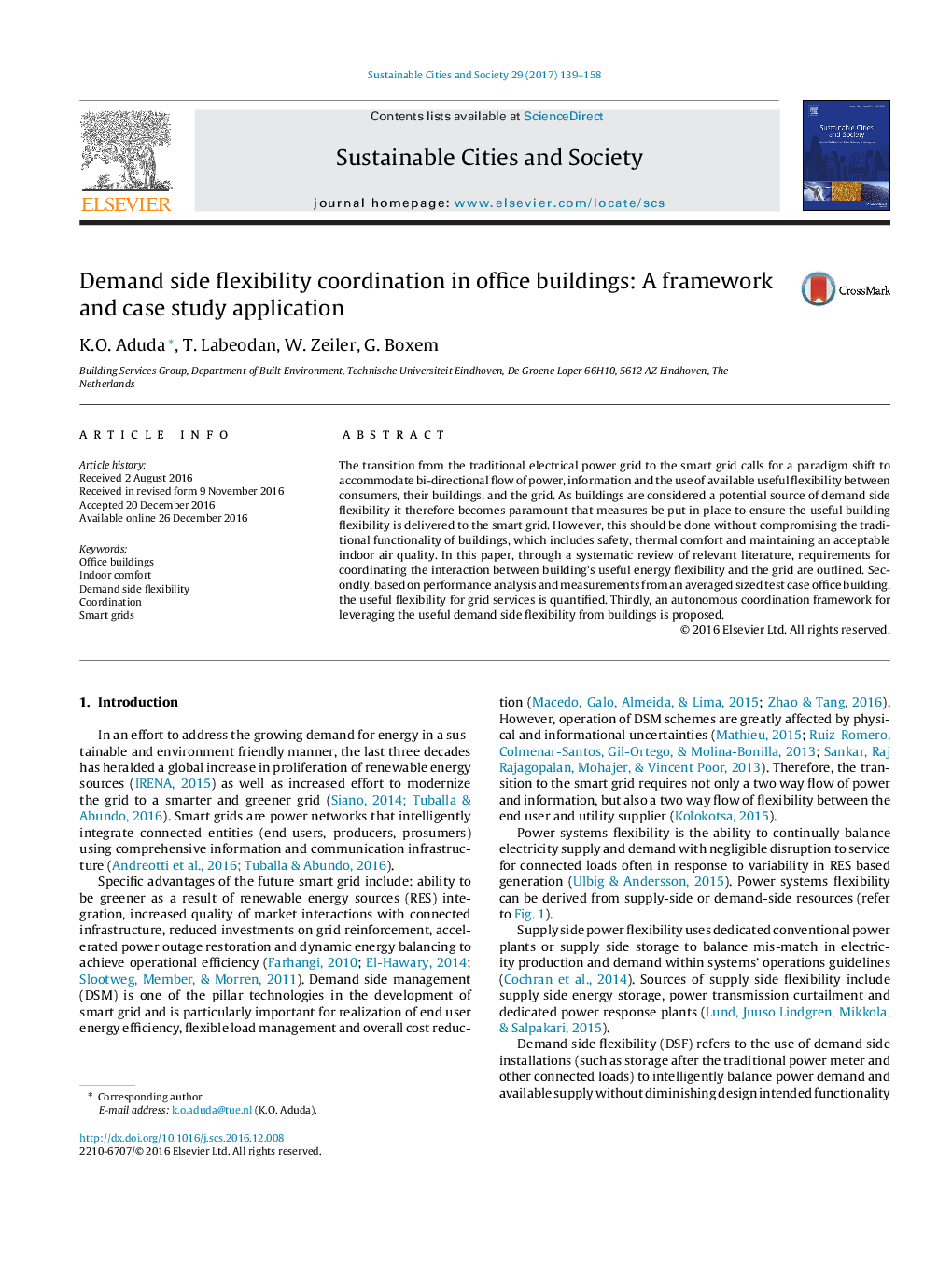| کد مقاله | کد نشریه | سال انتشار | مقاله انگلیسی | نسخه تمام متن |
|---|---|---|---|---|
| 4928259 | 1432019 | 2017 | 20 صفحه PDF | دانلود رایگان |
عنوان انگلیسی مقاله ISI
Demand side flexibility coordination in office buildings: A framework and case study application
ترجمه فارسی عنوان
هماهنگی انعطاف پذیری در ساختمان های اداری: چارچوب و کاربرد مورد مطالعه
دانلود مقاله + سفارش ترجمه
دانلود مقاله ISI انگلیسی
رایگان برای ایرانیان
کلمات کلیدی
ساختمان های اداری، راحتی در داخل، انعطاف پذیری سمت تقاضا هماهنگی، شبکه های هوشمند
ترجمه چکیده
انتقال از شبکه برق سنتی به شبکه هوشمند، تغییر پارادایم را برای جابجایی دو طرفه قدرت، اطلاعات و استفاده از انعطاف پذیری مفید بین مصرف کنندگان، ساختمان های آنها و شبکه می دهد. به این ترتیب که ساختمانها به عنوان یک منبع بالقوه انعطاف پذیری در نظر گرفته می شوند، بنابراین مهمتر است که اقدامات لازم برای اطمینان از انعطاف پذیری ساختمان مفید به شبکه هوشمند ارائه شود. با این حال، این باید بدون مجوز از عملکرد سنتی ساختمان، که شامل ایمنی، راحتی حرارتی و حفظ کیفیت هوا در محیط مناسب است. در این مقاله، از طریق بررسی سیستماتیک ادبیات مربوطه، الزامات هماهنگ سازی تعامل بین انعطاف پذیری انرژی ساختمان و شبکه مشخص شده است. ثانیا، بر اساس تجزیه و تحلیل عملکرد و اندازه گیری ها از یک ساختمان اداری مورد آزمایش متوسط، انعطاف پذیری مفید برای خدمات شبکه، کم است. سوم، یک چارچوب هماهنگی مستقل برای استفاده از انعطاف پذیری مورد نیاز از طرف ساختمان ها پیشنهاد شده است.
موضوعات مرتبط
مهندسی و علوم پایه
مهندسی انرژی
انرژی های تجدید پذیر، توسعه پایدار و محیط زیست
چکیده انگلیسی
The transition from the traditional electrical power grid to the smart grid calls for a paradigm shift to accommodate bi-directional flow of power, information and the use of available useful flexibility between consumers, their buildings, and the grid. As buildings are considered a potential source of demand side flexibility it therefore becomes paramount that measures be put in place to ensure the useful building flexibility is delivered to the smart grid. However, this should be done without compromising the traditional functionality of buildings, which includes safety, thermal comfort and maintaining an acceptable indoor air quality. In this paper, through a systematic review of relevant literature, requirements for coordinating the interaction between building's useful energy flexibility and the grid are outlined. Secondly, based on performance analysis and measurements from an averaged sized test case office building, the useful flexibility for grid services is quantified. Thirdly, an autonomous coordination framework for leveraging the useful demand side flexibility from buildings is proposed.
ناشر
Database: Elsevier - ScienceDirect (ساینس دایرکت)
Journal: Sustainable Cities and Society - Volume 29, February 2017, Pages 139-158
Journal: Sustainable Cities and Society - Volume 29, February 2017, Pages 139-158
نویسندگان
K.O. Aduda, T. Labeodan, W. Zeiler, G. Boxem,
